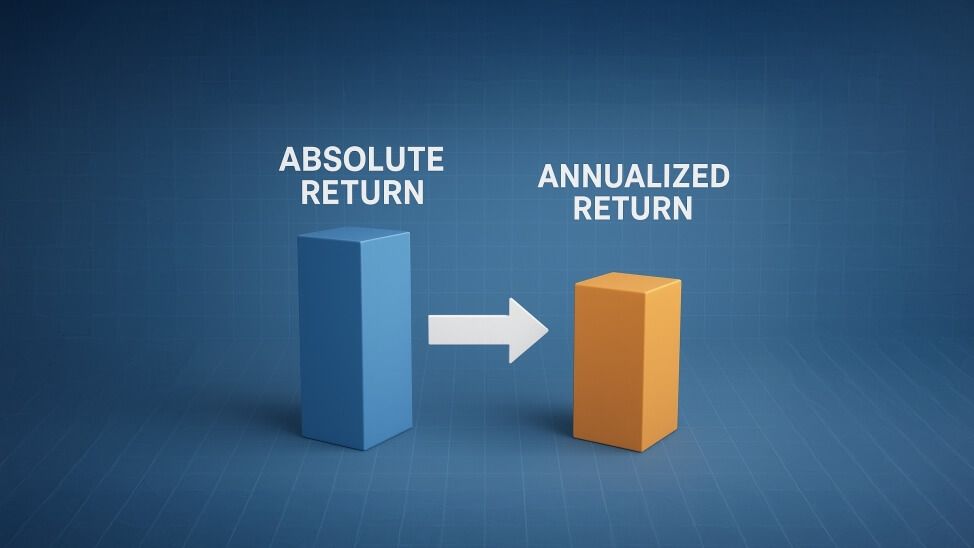What is Hedging? Meaning, Advantages & Types of Hedging

- Published Date: September 12, 2024
- Updated Date: November 24, 2025
- By Team Choice
In investing, risk is unavoidable. Stock prices rise and fall, currencies fluctuate, and commodities shift with global events. For investors, the challenge isn’t avoiding risk; it’s about managing it wisely. This is where hedging comes into play. Hedging in the stock market works like a protective shield, helping you safeguard your investments from sudden market swings while keeping your money working for you.
The blog will break down the meaning of hedging in finance, explain how it works, explore key strategies, discuss why investors use it, highlight its advantages and risks, and share examples to help you understand better.
Hedging Meaning
In general terms, hedging means taking precautions to protect yourself from possible losses or negative outcomes. Just like carrying an umbrella when the forecast predicts rain, hedging is about being prepared for uncertainties.
What is Hedging in the Stock Market?
Hedging in the stock market means using financial instruments to protect against stock price fluctuations. For instance, if you hold shares of a company but worry about short-term declines, you might buy a put option (which increases in value if the stock falls). This way, your downside risk is limited.
In simple terms, hedging in finance is a strategy used to protect your investments from potential losses. Just like you buy insurance for your car or home, hedging is about safeguarding your portfolio against uncertainties. It doesn’t eliminate risks completely, but it helps you manage them better.
How Does Hedging Work?
Hedging works by creating a balance between potential losses and gains through offsetting positions. The core idea is simple: if one investment moves against you, another investment or contract cushions the impact. Think of it like having health insurance. You still face the risk of falling ill, but insurance helps cover the cost if it happens. Similarly, hedging doesn’t stop market fluctuations but ensures you’re better prepared for them.
Here’s how it works in practice:
- Identify the Risk: An investor first assesses where their portfolio is exposed (for example, falling stock prices, rising commodity costs, or currency swings).
- Choose a Hedging Tool: Based on the risk, they may use options, futures, forward contracts, or ETFs.
- Take an Opposition Position: The hedge is designed to move in the opposite direction of the risk.
- Offset the Outcome: If the original investment loses value, the hedge generates gains that soften the blow.
Types of Hedging Strategies
Investors and businesses can use several types of hedging strategies depending on the risks they face and their investment goals. Below are the most common ones:
1. Forward Contracts:
A forward contract is a customised agreement between two parties to exchange an asset at a set price on a future date. It is an over-the-counter (OTC) derivative, meaning it is not traded on a formal exchange. These contracts are often used in commodities and currencies to lock in prices, which helps businesses and investors avoid the uncertainty of market fluctuations.
2. Futures Contracts:
Futures contracts work much like forward contracts but are standardised and traded on exchanges. Such contracts are frequently used by participants in the market, like farmers, exporters, and large-scale investors, to protect themselves from fluctuations in commodity prices or the value of stock indices. Because they are exchange-traded, they also bring in greater liquidity and transparency compared to forwards.
3. Options Trading:
Options give investors the right, but not the obligation, to buy (call option) or sell (put option) an asset at a set price within a certain time frame. They are particularly popular because they allow investors to limit their downside risk while still leaving room for gains if the market moves in their favour.
4. Swaps:
Swaps are agreements between two parties to exchange cash flows, often based on interest rates or currencies. For example, a company with variable-rate debt may enter into an interest rate swap to exchange its fluctuating interest payments for fixed payments, thereby reducing uncertainty in future expenses.
5. Portfolio Hedging:
Instead of hedging individual investments, portfolio hedging involves protecting an entire collection of assets. Investors often use index futures, ETFs, or options to create a shield for their overall portfolio, ensuring that market downturns have less impact on their wealth.
6. Currency Hedging:
Currency hedging is commonly used by exporters, importers, and international investors to mitigate the risk of exchange rate fluctuations. By using instruments like forward contracts, options, or currency ETFs, they can ensure that sudden changes in foreign exchange rates do not negatively affect their profits.
7. Natural Hedging:
Natural hedging occurs when a business or investor structures their operations in such a way that risks cancel each other out without relying on financial instruments. For example, a company that earns revenues in dollars but also has expenses in dollars naturally offsets its exposure to currency risk.
Why Do You Need to Hedge?
The primary reason investors and businesses hedge is to manage uncertainty. Financial markets are unpredictable, and price movements in stocks, commodities, interest rates, or currencies can quickly erode returns. Hedging acts as a protective layer that cushions these unexpected shocks.
By hedging, investors can preserve their capital during downturns and avoid the panic that often comes with market volatility. It also allows them to stay invested for the long term rather than making emotional decisions in the short term. For businesses, hedging provides stability in planning; exporters can lock in exchange rates, while manufacturers can secure raw material costs in advance.
In essence, hedging is less about chasing profits and more about risk control. It gives both individuals and institutions the confidence to pursue their financial goals without being derailed by sudden market swings.
How to Create a Hedging Plan?
Creating an effective hedging plan involves careful assessment and strategy. Here’s a step-by-step approach:
- Identify Risks: Assess your portfolio or business operations to understand where you are exposed. This could include equity risks, currency fluctuations, interest rate changes, or commodity price volatility.
- Determine Risk Tolerance: Decide how much risk you are willing to bear. This will help you decide the extent of hedging required and the instruments to use.
- Choose Hedging Instruments: Based on the type of risk, select appropriate tools such as options, futures, swaps, or ETFs. Each instrument has its advantages and costs, so align your choice with your financial goals.
- Implement the Hedge: Execute the chosen strategy by entering contracts or investments that offset potential losses. Make sure the hedge aligns with your risk coverage objectives.
- Monitor and Adjust: Markets are dynamic, so continuously monitor your hedge’s effectiveness. Adjust your positions as market conditions or your portfolio exposure change.
Hedging with Options vs Futures: Which is Better?
When it comes to hedging, options and futures are two of the most widely used tools, but they serve different purposes and suit different risk appetites.
Options:
- Options provide flexibility because they give the investor the right, but not the obligation, to buy or sell an asset at a predetermined price within a specific time frame.
- This means that the investor can limit potential losses while still benefiting if the market moves favourably.
- Options are particularly useful for individual investors or those who want controlled risk without committing to a full position.
- However, using options requires paying a premium, which is a cost to consider.
Futures:
- Futures are binding contracts that obligate the buyer or seller to transact the asset at a set price on a specified date.
- Futures are commonly used by institutions, exporters, or investors dealing with large positions in commodities, currencies, or indices.
- While they offer strong protection against price fluctuations, they can be riskier because of margin requirements and the potential for significant losses if markets move against the position.
Which of them is better depends on the investor’s goals, risk tolerance, and market experience. If you want flexibility and limited downside, options are often preferred. If you need certainty and are comfortable managing larger positions, futures may be more effective. In many cases, sophisticated investors use a combination of both to create a balanced hedging strategy.
Advantages of Hedging
Hedging offers investors and businesses several benefits, primarily focused on reducing risk and providing stability in uncertain markets. Here are the key advantages:
- Reduces Potential Losses: Hedging protects investments from adverse market movements, helping limit financial damage during downturns.
- Provides Portfolio Stability: By offsetting risks, hedging smooths out fluctuations, enabling more consistent portfolio performance.
- Manages Uncertainty: It allows investors and businesses to plan with confidence, minimising the impact of unpredictable market events.
- Supports Long-Term Investment Goals: Hedging helps investors stay committed to their strategies, avoid panic selling, and foster sustainable wealth creation.
- Improves Financial Planning: For businesses, hedging stabilises cash flows, costs, and revenues, making budgeting and forecasting more reliable.
- Offers Flexibility: With various instruments like options, futures, and swaps, investors can tailor hedging strategies to match their risk tolerance and objectives.
Risks of Hedging
While hedging can protect against potential losses, it also comes with certain risks and limitations that investors and businesses should be aware of:
- Costly: Implementing hedging strategies often involves paying premiums, fees, or maintaining margin accounts, which can reduce overall returns.
- Complexity: Certain hedging instruments, including options, futures, and swaps, necessitate advanced knowledge and meticulous monitoring. Mistakes or miscalculations can lead to losses.
- Limited Upside: Certain hedges may cap potential gains. For example, protective positions or offsetting trades reduce losses but can also restrict profits.
- False Sense of Security: Hedging does not eliminate all risk. Investors may incorrectly assume their portfolio is fully protected and make overly aggressive decisions.
- Market Risk: Extreme or unexpected market events can render hedges ineffective or underperform, especially in volatile or illiquid markets.
- Time Sensitivity: Many hedging instruments have expiration dates or require timely adjustments, meaning poorly timed hedges can fail to provide protection when needed.
Examples of Hedging
Hedging strategies can be applied in various financial markets and business contexts. Here are some common examples:
Stock Hedging:
An investor owns shares of a technology company but is concerned about short-term market volatility. To hedge, they sell a call option on the same stock (covered call strategy). If the stock price falls, the loss in the stock’s value is partially offset by the premium received from selling the call option.
Commodity Hedging:
A farmer expecting a future crop harvest enters into a futures contract to lock in the selling price. This ensures a stable income even if market prices drop at the time of harvest.
Currency Hedging:
An exporter dealing in US dollars locks in exchange rates using forward contracts to avoid losses due to currency fluctuations when converting earnings to their home currency.
Interest Rate Hedging:
A company with variable-rate debt may use interest rate swaps to convert floating-rate payments into fixed rates, reducing uncertainty about future interest expenses.
Portfolio Hedging:
An investor uses index futures or ETFs to hedge an entire portfolio against broad market declines, rather than hedging individual stocks.
Conclusion
Hedging is a vital strategy for managing risk in both investing and business. It doesn’t eliminate market uncertainties or guarantee profits, but it helps reduce potential losses and provides stability in volatile markets. By using tools like options, futures, swaps, and ETFs, investors and businesses can protect their portfolios, plan more effectively, and make more confident decisions.
Ultimately, the purpose of hedging is not to chase extra gains but to safeguard existing investments and ensure long-term financial growth. Whether you are an individual investor or part of a large institution, a well-thought-out hedging plan can help you navigate market fluctuations with greater confidence and resilience.
FAQs
Is Hedging Only For Big Investors?
No. While large institutions and hedge funds use hedging extensively, individual investors can also hedge their portfolios using tools like options, ETFs, or mutual funds.
Does hedging eliminate all risk?
No. Hedging reduces risk but cannot remove it entirely. There will always be some level of uncertainty in financial markets.
Is hedging expensive?
It can be. Some strategies, like buying options, require paying premiums, while others may involve transaction fees or margin requirements. The cost depends on the tools and strategies you choose.
Can hedging guarantee profits?
No. The goal of hedging is protection, not profit. It helps minimise losses but does not ensure gains.
Why does hedging matter in the stock market?
Hedging is important because it allows investors to protect their portfolios from sudden market swings, stay invested during uncertain times, and pursue long-term financial goals with greater confidence.
Recommended for you

Zinc Future Price Forecast for Next Week

Copper Price Forecast for Next Week

Absolute Return vs Annualized Return: Key Differences Explained
